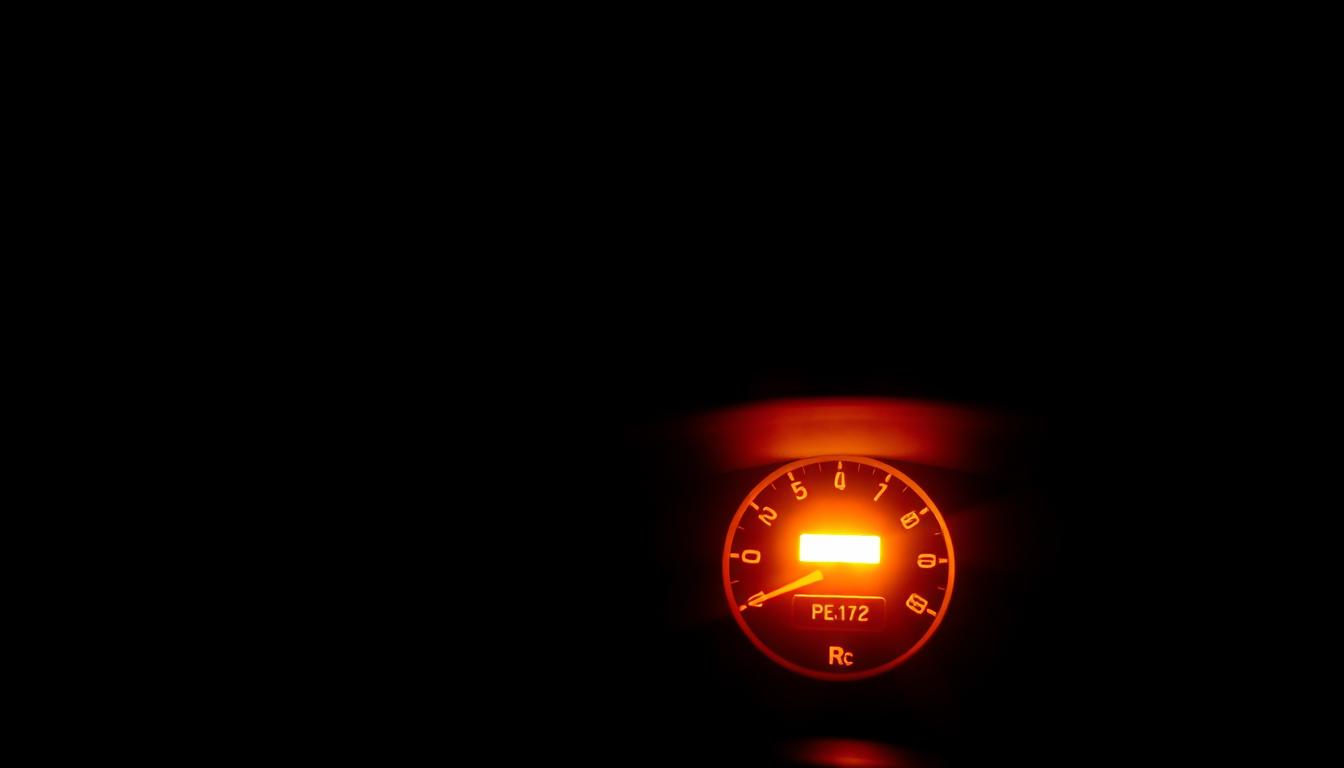If you’ve ever experienced your check engine light flashing then stops car shaking, you’re not alone—and it’s a warning you shouldn’t ignore. Many drivers report a check engine light flashing car shaking when accelerating, only for it to stop after a short time. While it might seem like a temporary glitch, it often signals deeper engine problems such as misfires, fuel injection issues, or ignition failure.
On forums like Reddit, drivers frequently ask, “Why is my check engine light flashing then stops car shaking?”—a sign of just how common and confusing this issue is. Whether it’s a Hyundai check engine light car shaking situation or a
Jeep check engine light flashing car shaking then stops, the symptoms often point to the same root causes. Sometimes, the check engine light flashing then stops when accelerating, adding to the unpredictability. Others notice car shaking and check engine light on after oil change, further complicating diagnosis.
No matter what car you drive, if the engine light is on and the car is shaking, it’s a sign something’s wrong. Sometimes, the check engine light flashes then stops and the car keeps shaking, which can be confusing. In this article, we’ll explain what these symptoms mean, what to check first, and whether it’s safe to keep driving.
Table of Contents
Key Takeaways
- Understanding the severity of a flashing check engine light
- Immediate actions to take when the light starts flashing
- Common causes of a flashing check engine light
- How to avoid further damage to your vehicle
- Steps to take to get your vehicle back to normal
Understanding What a Flashing Check Engine Light Means
Understanding the meaning behind a flashing check engine light is crucial for determining the severity of the issue with your vehicle.
A flashing check engine light indicates a more serious problem compared to a steady light. While a steady light might signal a less urgent issue, a flashing light warns of a problem that requires immediate attention to prevent damage to your vehicle.
Difference Between Solid and Flashing Check Engine Lights
The primary difference between a solid and a flashing check engine light lies in the severity of the issue. A solid light typically indicates a less critical problem, such as a loose gas cap or a faulty sensor, whereas a flashing light signifies a more severe issue, often related to engine misfires that can damage the catalytic converter.
The Severity of a Flashing Warning
A flashing check engine light indicates that your vehicle’s engine is experiencing a problem that could cause significant damage if not addressed promptly. Engine misfires, for instance, can overheat the catalytic converter, leading to costly repairs.
How the Engine Control Module Detects Problems
The engine control module (ECM) monitors various engine parameters, such as fuel mixture and engine speed, to detect any deviations from normal operating conditions. When the ECM detects a problem, such as an engine misfire, it triggers the check engine light to alert the driver.
Here is a simple table to illustrate how the ECM detects problems:
| Parameter | Normal Condition | Abnormal Condition |
|---|---|---|
| Engine Speed | Stable RPM | Irregular RPM |
| Fuel Mixture | Optimal mix | Too rich or too lean |
| Misfire Rate | Zero or minimal | High misfire rate |
Immediate Steps When Your Check Engine Light is Flashing
When your check engine light starts flashing, it is crucial to take immediate action to prevent further damage to your vehicle. A flashing light indicates a more severe issue than a steady light, typically related to engine misfires that can cause damage to the catalytic converter or other critical components.
Reduce Speed and Engine Load
The first step when you see a flashing check engine light is to reduce your speed and engine load as much as possible. This reduces the strain on your engine and minimizes the risk of further damage. Avoid hard acceleration and try to maintain a steady speed.
Pull Over Safely When Possible
As soon as it is safe to do so, pull over to a safe location and stop the vehicle. This will help prevent any additional damage that could be caused by continuing to drive, especially if the issue is related to engine misfires.
Check for Other Warning Signs
While stopped, check your dashboard for other warning signs or lights that could give you more information about the problem. Other lights or messages could indicate other issues that need to be addressed.
Deciding Whether to Continue Driving
If you have to continue driving to reach a repair shop or a safe location, do so with caution. Keep an eye on your vehicle’s behavior, and be prepared to stop if the situation worsens. It is generally recommended to avoid driving if the check engine light is flashing, as this indicates a serious problem.
Here is a quick reference table to help you understand the steps to take when your check engine light is flashing:
| Step | Action | Reason |
|---|---|---|
| 1 | Reduce speed | Minimize engine strain |
| 2 | Reduce engine load | Avoid further damage |
| 3 | Pull over safely | Prevent additional damage |
| 4 | Check for other signs | Gather more information |
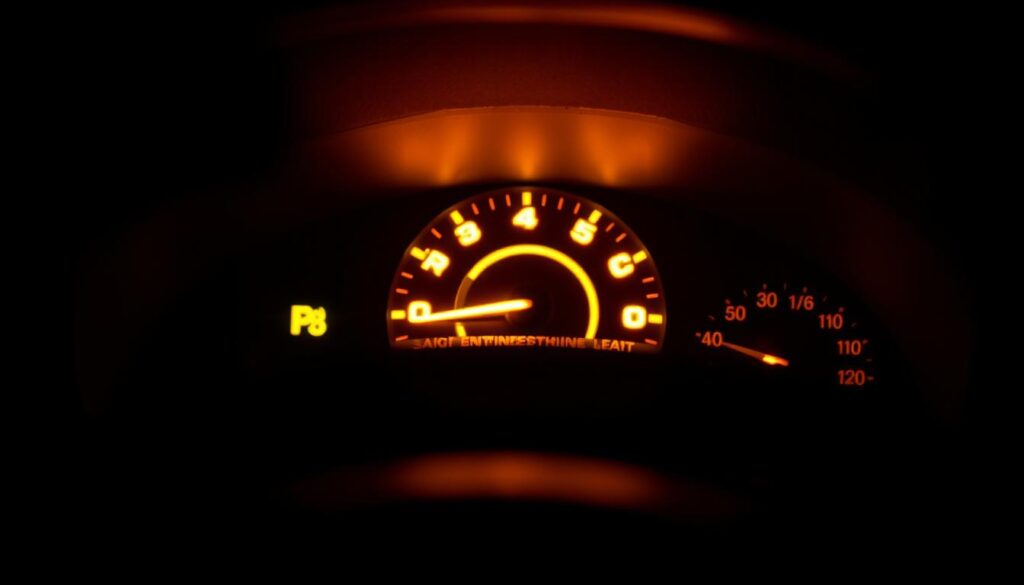
Is It Safe to Drive With a Check Engine Light Flashing
If your check engine light is flashing, it’s essential to assess the situation quickly to avoid potential damage. A flashing check engine light indicates a more serious issue than a steady light, often pointing to a problem that requires immediate attention.
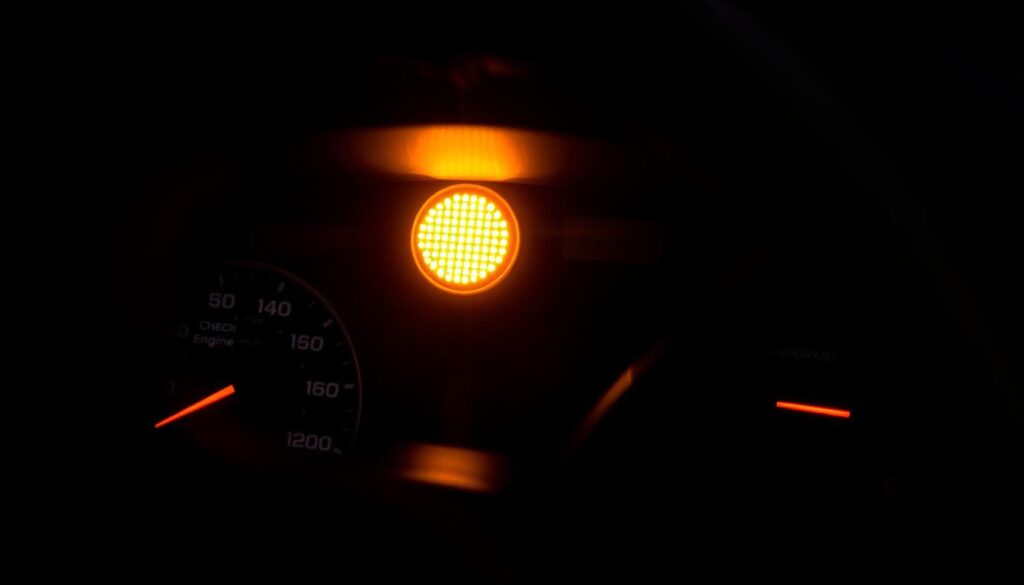
Potential Risks to Your Vehicle
Driving with a flashing check engine light can cause serious damage to your vehicle, particularly to the catalytic converter. The catalytic converter is crucial for reducing emissions, and damage to it can lead to costly repairs. Additionally, a flashing check engine light may indicate engine misfires, which can also harm the engine over time.
When to Call for a Tow
If your check engine light is flashing, it’s recommended to pull over as soon as it’s safe to do so. If you’re in a hazardous location or the vehicle is showing other signs of distress, such as unusual noises or vibrations, it’s best to call for a tow to avoid further damage.
Emergency Driving Techniques If You Must Continue
If you must continue driving, reduce your speed and avoid heavy acceleration. This can help minimize the risk of further damage. However, it’s crucial to get your vehicle checked by a professional as soon as possible to diagnose and address the underlying issue.
Common Causes of a Check Engine Light Flashing
A flashing check engine light can be triggered by several factors, ranging from minor issues to serious problems that require immediate attention. Understanding these causes is crucial for timely and effective repairs.
Engine Misfires
One of the most common reasons for a flashing check engine light is engine misfires. An engine misfire occurs when one or more cylinders fail to ignite the fuel-air mixture properly, leading to a loss of power and potentially causing damage to the catalytic converter. Engine misfires can be due to faulty spark plugs, ignition coil issues, or problems with fuel injectors.
Catalytic Converter Issues
The catalytic converter is a critical component of your vehicle’s emissions system. A flashing check engine light can indicate that the catalytic converter is malfunctioning or damaged, often due to engine misfires. Replacing a catalytic converter can be expensive, making it essential to address the issue promptly.
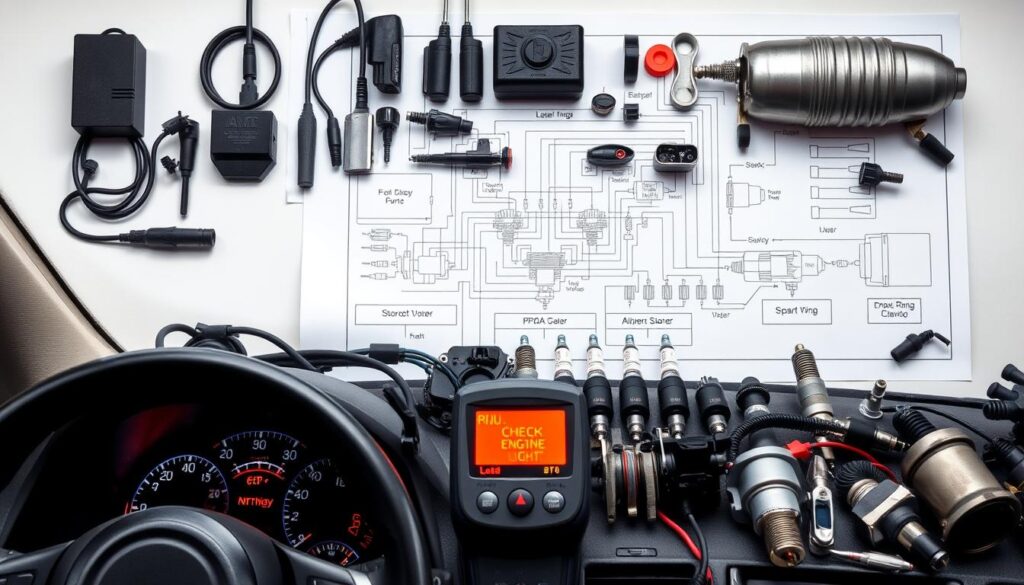
Faulty Oxygen Sensors
Faulty oxygen sensors can also trigger a flashing check engine light. Oxygen sensors monitor the oxygen levels in the exhaust gases, helping the engine control module (ECM) adjust the fuel-air mixture. A malfunctioning oxygen sensor can lead to poor engine performance and increased emissions.
Ignition System Problems
Issues with the ignition system, such as worn-out spark plugs or faulty ignition coils, can cause engine misfires and trigger a flashing check engine light. Regular maintenance, like replacing spark plugs, can help prevent these issues.
Fuel System Malfunctions
Problems with the fuel system, including clogged fuel injectors or a faulty fuel pump, can also lead to a flashing check engine light. These issues can cause engine misfires and affect overall vehicle performance.
Why Is My Check Engine Light Flashing and Car Shaking
The combination of a flashing check engine light and a shaking vehicle is a critical indicator that you should stop driving and investigate the cause immediately. This dual warning signifies that there is a serious issue with your vehicle, potentially related to engine misfires or other critical malfunctions.
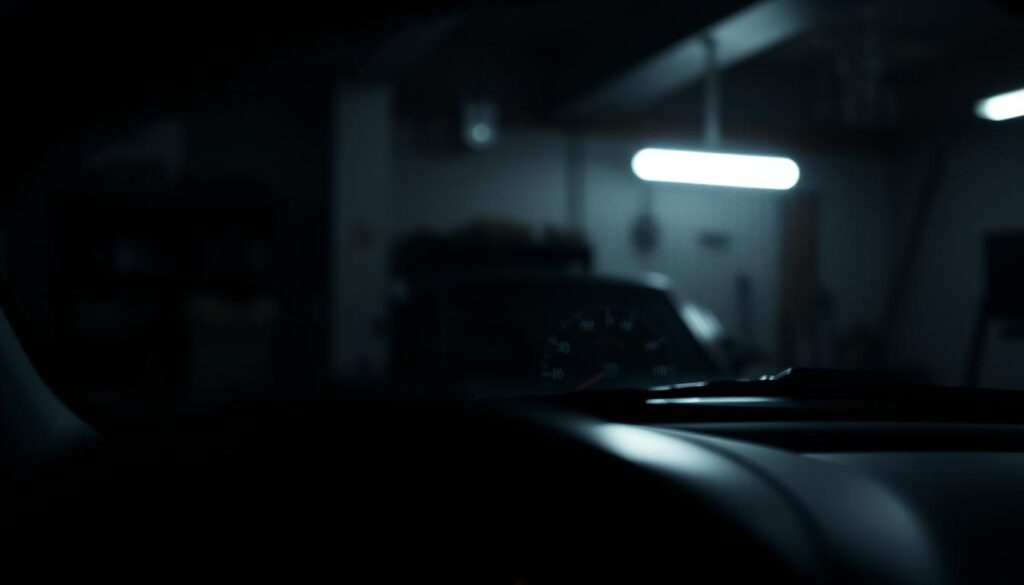
The Connection Between Misfires and Vehicle Vibration
Engine misfires are a primary cause of vibration in vehicles. When the engine misfires, it means that one or more cylinders are not firing properly, causing a loss of power and creating vibrations that you can feel throughout the vehicle. This vibration, coupled with a flashing check engine light, is a strong indication that your engine is experiencing misfires.
Potential Damage Being Done
If your engine is misfiring, it can lead to significant damage over time, including damage to the catalytic converter, engine, and other critical components. If left unchecked, this can result in costly repairs and potentially leave you stranded.
Severity Assessment Based on Shaking Intensity
The intensity of the shaking can give you an idea of the severity of the problem. Minor vibrations might indicate a less severe issue, whereas severe shaking could signify a more critical problem that requires immediate attention. It is crucial to monitor the shaking intensity and other symptoms to help diagnose the issue accurately.
Check Engine Light Flashing When Accelerating: What It Means
Noticing your check engine light flashing when you accelerate is a critical warning that demands further investigation. This phenomenon is often associated with specific engine or transmission issues that arise or become more pronounced under the stress of acceleration.
Load-Related Engine Problems
When the engine is under load, such as during acceleration, certain problems become more apparent. Load-related engine problems can include issues like engine misfires, which are more noticeable when the engine is under stress. These misfires can be due to faulty spark plugs, ignition coil problems, or issues with the fuel system.
A table summarizing common load-related engine problems is provided below:
| Problem | Description | Common Causes |
|---|---|---|
| Engine Misfires | Misfires occur when the fuel-air mixture in the engine’s cylinders doesn’t ignite properly. | Faulty spark plugs, ignition coil issues, fuel system problems |
| Fuel Delivery Issues | Insufficient or improper fuel delivery can cause engine performance issues under load. | Clogged fuel filters, faulty fuel injectors, low fuel pressure |
Fuel Delivery Issues During Acceleration
Fuel delivery issues can become particularly problematic during acceleration, as the engine demands more fuel to maintain or increase speed. Faulty fuel injectors or a clogged fuel filter can lead to inadequate fuel supply, causing the engine to run lean and potentially leading to a flashing check engine light.
“A well-functioning fuel system is crucial for maintaining optimal engine performance, especially under acceleration. Issues like clogged fuel injectors can lead to serious problems if not addressed promptly.” –
Automotive Expert
Transmission and Engine Interaction Problems
The interaction between the transmission and engine is critical, especially during acceleration. Problems such as slipping transmission or incorrect gear ratios can cause the engine to work harder, potentially triggering a flashing check engine light. Ensuring that both the engine and transmission are functioning properly is key to avoiding these issues.
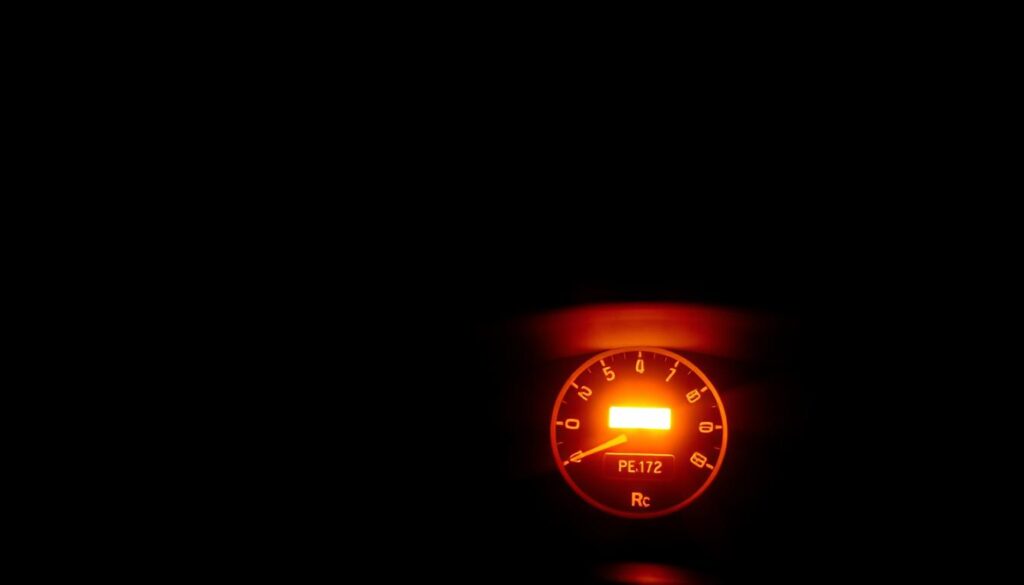
Understanding the causes of a flashing check engine light during acceleration is crucial for taking the right corrective actions. Whether it’s related to load-related engine problems, fuel delivery issues, or transmission and engine interaction, prompt diagnosis and repair are essential to prevent further damage.
Check Engine Light Flashing Then Stops: Should You Still Worry
A flashing check engine light that stops suddenly may indicate an intermittent problem with your vehicle. Even if the light goes off, it’s crucial to understand that the issue might still exist and should be diagnosed.
Intermittent Problems and Their Diagnosis
Intermittent problems can be challenging to diagnose because they don’t always trigger the check engine light. These issues might be related to loose connections, faulty sensors, or other factors that don’t always cause the light to stay on.
Why Temporary Fixes Aren’t Solutions
Some drivers might be tempted to ignore the issue if the check engine light stops flashing. However, temporary fixes or ignoring the problem altogether can lead to more severe damage down the line. It’s essential to identify and address the root cause.
Recording Patterns to Help Your Mechanic
To help your mechanic diagnose the issue, it’s helpful to record patterns related to when the check engine light flashes. This can include noting the conditions under which it happens, such as during acceleration or when the engine is cold.
| Pattern to Record | Possible Cause |
|---|---|
| Flashing during acceleration | Fuel delivery issues or ignition system problems |
| Flashing when engine is cold | Faulty oxygen sensor or coolant temperature sensor issues |
| Random flashing | Loose connections or faulty wiring |
By recording these patterns and sharing them with your mechanic, you can help them diagnose the issue more efficiently.
Diagnosing a Flashing Check Engine Light
Diagnosing a flashing check engine light requires a systematic approach, starting with the right tools and knowledge. The first step involves understanding the diagnostic capabilities of your vehicle.
Using OBD-II Scanners
An OBD-II scanner is an essential tool for diagnosing issues indicated by a flashing check engine light. These scanners can read error codes stored in your vehicle’s onboard computer, providing valuable insights into the problem.
“Modern OBD-II scanners are not just code readers; they’re diagnostic tools that can help you understand the severity of the issue,” says a leading automotive expert.
Common Error Codes Associated with Flashing Lights
Certain error codes are commonly associated with a flashing check engine light, including those related to engine misfires, catalytic converter issues, and faulty oxygen sensors. Understanding these codes is crucial for accurate diagnosis.
Professional vs. DIY Diagnosis
While DIY diagnosis using an OBD-II scanner is possible, professional diagnosis is often recommended for complex issues. Professionals have the experience and advanced tools to accurately diagnose and repair problems.
What to Do With the Diagnostic Information
Once you have the diagnostic information, you can decide on the next steps. This might involve repairing the issue yourself if it’s minor or seeking professional help for more complex problems.
By following a systematic diagnostic approach, you can identify and address the root cause of a flashing check engine light, ensuring your vehicle is repaired efficiently and effectively.
Brand-Specific Check Engine Light Flashing Issues
Car manufacturers like Honda, Toyota, and Ford have their own set of problems that can trigger the check engine light to flash. While some issues are common across various brands, others are unique to specific models. Understanding these brand-specific issues can help in diagnosing and addressing the problem more effectively.
Honda and Toyota Models
For Honda and Toyota models, a flashing check engine light is often related to engine misfires. Engine misfires can cause significant damage if not addressed promptly. In some cases, it may be due to faulty spark plugs or ignition coil issues.
Ford and Chevrolet Vehicles
Ford and Chevrolet vehicles may experience a flashing check engine light due to issues related to the catalytic converter or fuel system malfunctions. Regular maintenance can help prevent some of these issues.
Subaru’s Unique Warning System
Subaru vehicles have a unique warning system, where the CRUISE control flashing may indicate a different type of issue, sometimes related to the engine or transmission.
Hyundai and Kia Common Problems
Hyundai and Kia, being closely related brands, share some common problems that can cause the check engine light to flash, such as issues with the oxygen sensor or ignition system. Identifying these issues early can prevent more severe damage.
The Cost of Ignoring a Flashing Check Engine Light
Failing to address a flashing check engine light can have significant repercussions on your vehicle’s performance and longevity. When this critical warning is ignored, it can lead to several costly and potentially catastrophic consequences.
Potential Damage to Catalytic Converters
A flashing check engine light often indicates engine misfires, which can damage the catalytic converter, a costly component to replace. If the engine continues to misfire, it can overheat the catalytic converter, causing it to fail.
Long-term Engine Damage
Continuing to drive with a flashing check engine light can result in long-term engine damage. Engine misfires can cause excessive wear on engine components, potentially leading to costly repairs or even engine failure.
Impact on Vehicle Value and Emissions
Neglecting to address the issue indicated by the flashing check engine light can negatively impact your vehicle’s value and cause it to fail emissions tests, resulting in additional repair costs to bring the vehicle into compliance.
Increased Repair Costs Over Time
As damage accumulates, repair costs will increase. Addressing the problem early can help prevent more costly repairs down the road, making it essential to diagnose and repair the issue as soon as possible.
Preventative Maintenance to Avoid Check Engine Light Emergencies
Regular maintenance is key to avoiding the stress of a flashing check engine light. By taking proactive steps, you can significantly reduce the likelihood of encountering a check engine light emergency. This section will discuss the importance of preventative maintenance, including regular tune-ups, monitoring fuel quality, addressing minor issues before they escalate, and keeping service records.
Maintaining your vehicle through regular tune-ups is crucial. This includes tasks such as changing the oil, replacing spark plugs, and checking the condition of belts and fluids. Regular tune-ups can help identify potential issues before they become serious, reducing the risk of a check engine light emergency.
Regular Tune-ups and Their Importance
Regular tune-ups involve a series of checks and maintenance tasks designed to keep your vehicle running smoothly. These tasks include oil changes, spark plug replacements, and inspections of belts and fluids. By keeping up with these tasks, you can prevent engine misfires, faulty oxygen sensors, and other issues that can trigger the check engine light.
Monitoring Fuel Quality
Using high-quality fuel is essential for maintaining your vehicle’s engine. Poor-quality fuel can lead to engine misfires and other problems that may cause the check engine light to flash. Monitoring fuel quality and using reputable fuel sources can help prevent these issues.
Addressing Minor Issues Before They Escalate
Addressing minor issues promptly is vital to preventing them from becoming major problems. For instance, if your vehicle is experiencing a slight vibration or unusual noise, having it checked by a mechanic can prevent more severe issues, such as engine damage, that could trigger a flashing check engine light.
Keeping Service Records
Keeping detailed service records is also important. This includes documenting all maintenance and repairs, which can help you track your vehicle’s maintenance history and identify potential issues early.
By following these preventative maintenance practices, you can reduce the risk of check engine light emergencies and keep your vehicle running smoothly.
Conclusion: Staying Safe When Your Check Engine Light Flashes
When your check engine light flashes, it is a clear indication that your vehicle needs immediate attention. Throughout this article, we have discussed the various reasons behind a flashing check engine light, including engine misfires, catalytic converter issues, and faulty oxygen sensors.
Understanding the severity of the problem and taking prompt action is crucial in preventing further damage to your vehicle. By reducing speed and engine load, pulling over safely when possible, and checking for other warning signs, you can minimize potential risks.
It is essential to stay safe by avoiding continued driving if the light continues to flash. Instead, consider using a tow service or repair shop to diagnose and fix the issue. By doing so, you will be taking a proactive step in staying safe with a flashing check engine light.
Regular maintenance, such as tune-ups and monitoring fuel quality, can help prevent check engine light emergencies. By being proactive, you can ensure your vehicle remains in good condition, and you can avoid costly repairs. Read More About ThreeBoysTime
FAQ
What does a flashing check engine light mean?
A flashing check engine light indicates a serious problem with your vehicle’s engine that requires immediate attention to prevent damage.
What is the difference between a solid and flashing check engine light?
A solid check engine light typically indicates a less urgent issue, while a flashing light signifies a more severe problem that demands prompt action.
Why is my check engine light flashing and my car shaking?
The check engine light flashing and car shaking are often related to engine misfires, which cause vibration and can lead to further damage if not addressed.
Is it safe to drive with a flashing check engine light?
Driving with a flashing check engine light is risky and can cause additional damage to your vehicle, such as harming the catalytic converter.
What should I do immediately when my check engine light starts flashing?
Reduce your speed, pull over safely when possible, and check for other warning signs to ensure your safety and prevent further damage.
What are the common causes of a flashing check engine light?
Common causes include engine misfires, catalytic converter issues, faulty oxygen sensors, ignition system problems, and fuel system malfunctions.
